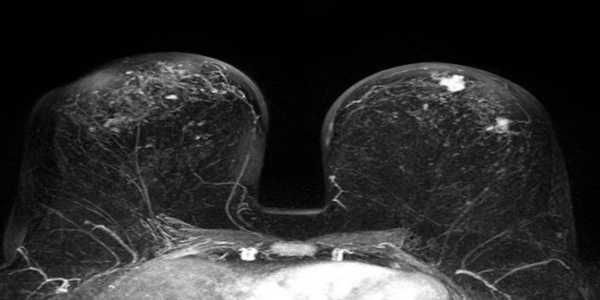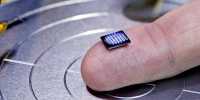According to a new study published in the journal Radiology, prediction models based on clinical characteristics and imaging findings may help reduce the false-positive rate in women with dense breasts who undergo supplemental breast cancer screening with MRI.
Women with dense breast tissue have a much higher risk of developing breast cancer than women with average breast density. High breast density also significantly reduces mammography sensitivity due to the masking effect of fibroglandular tissue, implying that cancers can be hidden within the dense breast tissue.
Breast MRI is regarded as a potentially useful supplement to mammography screening in women with dense breast tissue for these reasons. It is the most sensitive imaging technique for detecting breast cancer and is capable of distinguishing between lesions and abnormalities in the breast. Its significant added value as a screening tool for women at high risk of breast cancer has been confirmed by research.
Prediction models based on clinical characteristics and imaging findings may help reduce the false-positive rate in women with dense breasts who undergo supplemental breast cancer screening with MRI, according to a new study.
For these reasons, breast MRI is regarded as a potentially useful supplement to mammography screening in women with dense breast tissue. It is the most sensitive imaging technique for detecting breast cancer and can differentiate between lesions and abnormalities in the breast. Research has confirmed its significant added value as a screening tool for women at high risk of breast cancer.
However, the high sensitivity that makes MRI an excellent screening tool also means that it frequently detects benign lesions that would otherwise go undetected. Women who are recalled for additional work-up as a result of these findings may be subjected to repeat MRI scans, targeted ultrasound, and biopsy. Additional investigations may cause anxiety in the patient, increase health-care costs, or result in biopsy-related complications.
“When considering the use of breast MRI as a screening tool, the reduction of the false-positive recall rate is an important issue,” said study lead author Bianca M. den Dekker, M.D., of the University Medical Center Utrecht in Utrecht, the Netherlands.

Dr. den Dekker and colleagues created prediction models to distinguish true-positive MRI screening from false positives in the new study. They combined MRI findings with clinical characteristics such as body mass index, family history of breast cancer, and use of hormone replacement therapy to create the models.
They used data from the DENSE trial, which compared the effectiveness of screening with mammography plus MRI to screening with mammography alone in Dutch breast cancer screening participants aged 50 to 75 years with extremely dense breasts.
79 of the 454 women who had a positive MRI result in the first round of supplemental MRI screening were diagnosed with breast cancer, implying that 375 women had false-positive MRI examinations. Based on all clinical characteristics and MRI findings, the full prediction model could have prevented 45.5 percent of false-positive recalls and 21.3 percent of benign biopsies while missing no cancers. The model-based solely on readily available MRI findings and age performed similarly and could have avoided 35.5 percent of false-positive MRI screenings and 13.0 percent of benign biopsies.
Meanwhile, the model-based solely on readily available MRI findings and age could have avoided 35.5 percent of false-positive MRI screenings and 13.0 percent of benign biopsies. It also had a 0.84 area under the curve.
“Our prediction models may identify a significant number of false positives after first-round supplemental MRI screenings, reducing false-positive recalls and benign biopsies while not missing any cancers,” said Dr. den Dekker. “This brings the implementation of supplemental screening MRI for women with dense breasts one step closer.”
The researchers intend to conduct validation studies with data from various populations. They also want to look at how prediction models perform in subsequent screening rounds. Dr. den Dekker noted that the study group’s false-positive rate decreased from 79.8 per 1,000 screenings in the first round to 26.3 per 1,000 in the second round.
“This can be explained in part by the availability of prior MRI examinations, which allows for interval change comparison,” she said. “Because incident screening rounds have a lower false-positive rate, separate models may be required.”
“In conclusion,” the researchers wrote, “prediction models based on clinical characteristics and MRI findings may reduce the false-positive first-round screening MRI rate and the number of benign biopsies, bringing supplemental screening MRI for women with dense breasts one step closer to implementation.” “Validation studies utilizing data from various populations and incident screening rounds are required.”
















